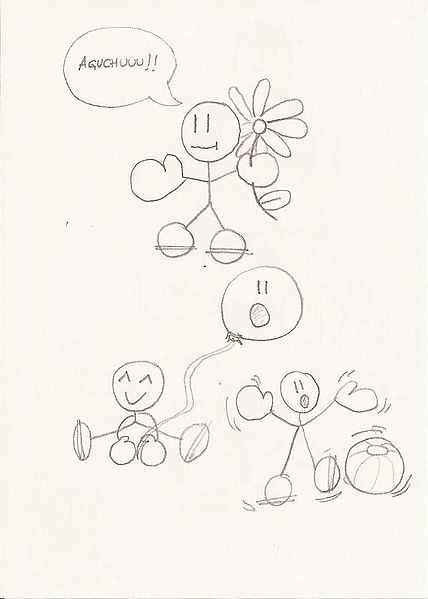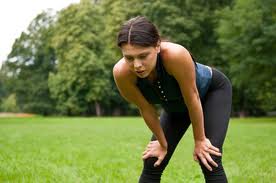The brutal physical game
The physical game is getting harder. Worse, preparing for the physical aspect to your career is complex, time-consuming, and fraught with danger.
The Hopman Cup is on this week in a beautiful new stadium in Perth, in front of an appreciative discerning public. This event suits Australia where doubles has as high a value as singles, and the team nature of tennis is important. It's very different in most other countries. On TV it's an interesting event to watch, because top players are preparing for the Australian Open in ten days, and the stadium is full of well-behaved, clapping, oohing and aahing spectators. The TV coverage has not been good, but the snippets we have seen has shown that the players are well committed to winning.

A little niggle
There's been a problem however - injuries. I've counted at least three matches which have become non-events because a player has become injured and the tie has effectively been abandoned, no replacement players being on site. Australia had an injury, and, through home advantage, were able to pull in one of the players from their academy, a sixteen year old. I'm not even sure he had any world ranking points. Normally he wouldn't be able to play in ATP events, but in this one he can, and why not?
There's a good reason why not. Injury. Already replacing an injured player, this 16 year old has in no way been prepared for this event, although he'll obviously be hitting his balls in practice and matches as normal. At the other end of the singles court he was faced with one of the more bullish players on the circuit, Verdasco. While our young Australian had no technical problem dealing with Verdasco, the physical battle was desperately one-sided. Amazingly the match went to a first set tie-break, before an inevitable decline in the second. What happens in this case is that the confirmed grizzled pro needs to make adjustments to his game when playing a precocious youngster, instead of the usual touring pro. The teenager will hit some great shots, surprising ones, high risk ones. He won't have the patterns and percentages of a seasoned pro. So the rythmn of the game is odd. Verdasco must just remain patient, let him hit his winners, and wait for the physical side of the game to kick in.
Generally speaking the physical game of tennis is two things.

Ball running fun
First is running. Teenagers are rather good at this. They love chasing balls all day rather like a dog'll keep on running after the same stick. There are even some players out there who are compulsive runners, who make their running ability their strength. You need to win every point three times, because that extra ball just keeps coming back. I think a player like Ferrer started off like this, just bringing every ball like a playful dog, but of course he's now become much more refined than this, becoming a master tactician, and having a comprehensive enough shot range to cope with various opponents.
A teenager is good at running, he has a light body, not overly muscled, which makes it easy for him to get around the court. But Verdasco won the running battle, because his thick legs, and thick set body, while not having the litheness of youth, have staying power for longer matches. So you need to like running, but can you run hard for several hours? Teenage boys can't.
The second aspect to the physical game is strength. This is what the Hopman Cup commentator really meant, when he said, " it's becoming so hard to climb up the ATP rankings, it's just physically so hard." Rather like the running problem, which is one of wanting to run all day AND being able to do it, strength refers to a more long term aspect. To climb up the rankings you need to prepare for a tournament series, get top fit, then travel every week, hit your warm-up balls every morning, play your singles and doubles matches, and hopefully, win. The next day you need to go out and do it all again. When you are winning this is quite easy, because that winning will keep driving you out there wanting ever more victories.
But how do you know your body can take this endless grind of weeks of preparation, followed by travelling and sequences of doubles and singles matches that you can't necessarily play when YOU want to play them?Sometimes your workload will be simply enormous, either because you are winning a lot, or because your tournament series stacks up matches one after the other. You can't always plan this in. You need sometimes super-human strength, exceptional physical recovery skills to keep the machine moving forwards, keeping injury free, and still playing winning, fatigue-free tennnis.

Wait a moment
When a player is nearing the end of his career, it is the strength that goes first. In fact a player who loves running after balls may well do that very well until he's a very old man. But can he recover, after a long rally, or a long match, or a tournament where he has had to win four or five times in a row? Not so easy as you get older. And, similarly, when you are younger, this strength is certainly not there, unless you are blessed with a power packet body at a young age, which Nadal clearly had. He is the exception rather than the rule.
For the remainder of us mortals, all we can do with the physical game is enjoy the running, keep our strength up, and hope for the best. Please, please, don't get injured.
Five of our most popular pages
. tournament win
. finding a sponsor
. the touring pro
. the master at work



